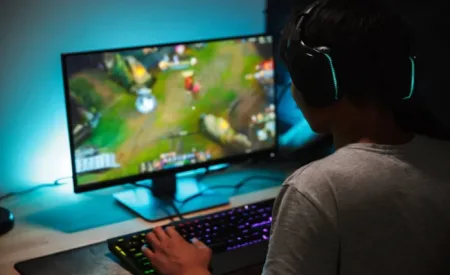In the fast-paced and ever-evolving landscape of color prediction games, technological advancements have played a pivotal role in shaping the way players engage with and experience these vibrant challenges. This article delves into the dynamic world of predicting progress, exploring the technological innovations that have propelled color prediction games to new heights and revolutionized the way enthusiasts interact with this captivating form of entertainment.
From Pixels to Immersive Experiences: Evolving Game Graphics:
One of the notable technological advancements in color prediction games lies in the evolution of game graphics. The transition from basic pixelated displays to immersive and high-definition graphics has transformed the visual experience. Players now find themselves immersed in a vibrant and dynamic visual landscape, enhancing the overall engagement and enjoyment of predicting colors.
Real-Time Algorithms: Enhancing Predictive Dynamics:
Technological progress has ushered in the era of real-time algorithms, fundamentally altering the predictive dynamics of color games. The algorithms governing color sequences have become more sophisticated, offering a dynamic and responsive environment. This enhancement not only challenges players to elevate their predictive skills but also ensures a continuously evolving and unpredictable gaming experience at damangames.in.
Machine Learning Integration: Adaptive Predictive Systems:
The integration of machine learning has introduced adaptive predictive systems into color prediction games. These systems learn from player behaviors, analyze patterns, and tailor the gaming experience based on individual preferences. The result is a personalized and challenging journey that keeps players on their toes while providing a sense of progression and mastery through continuous learning.
Mobile Accessibility: Predicting Anytime, Anywhere:
Advancements in technology have facilitated the accessibility of color prediction games, allowing enthusiasts to predict colors anytime and anywhere. The widespread availability of mobile platforms has transformed these games into portable and convenient experiences. Players can now engage in predicting progress on-the-go, seamlessly integrating the gaming experience into their daily lives.
Augmented Reality (AR) Integration: Gaming Beyond Screens:
The advent of augmented reality (AR) has pushed the boundaries of color prediction games beyond traditional screens. AR integration allows players to interact with virtual color sequences in their real-world environment, creating an immersive and interactive experience. This technological leap opens up new avenues for creativity and engagement, bringing a fresh dimension to the predicting progress.
Multiplayer and Social Integration: Predicting in Community:
Technological advancements have fostered a sense of community within color prediction games. Multiplayer features and social integration allow players to predict colors alongside friends or connect with a broader gaming community. The shared experience of predicting progress enhances the social aspect of the game, creating a dynamic and collaborative environment that adds depth to the overall gaming journey.
Gamification Elements: Rewarding Predictive Achievements:
The incorporation of gamification elements has become a hallmark of predicting progress. Technological advancements enable the implementation of reward systems, achievements, and leaderboards that recognize and celebrate player accomplishments. These elements not only add a competitive edge to the gaming experience but also motivate players to strive for continuous improvement and mastery.
Enhanced User Interfaces: Intuitive and Engaging Controls:
Technological strides in user interface design have resulted in more intuitive and engaging controls for color prediction games. Enhanced interfaces ensure that players can navigate the game seamlessly, making predictions with ease and precision. The user-friendly design contributes to a more enjoyable and accessible predicting experience, accommodating both seasoned players and newcomers.
Conclusion:
Predicting progress in color prediction games is intricately woven with the fabric of technological advancements. From evolving graphics and real-time algorithms to the integration of machine learning, augmented reality, and social elements, these innovations have redefined the landscape of color games. As technology continues to advance, the predicting journey promises to become even more immersive, dynamic, and accessible, shaping the future of color prediction games and captivating enthusiasts with exciting possibilities on the horizon.



